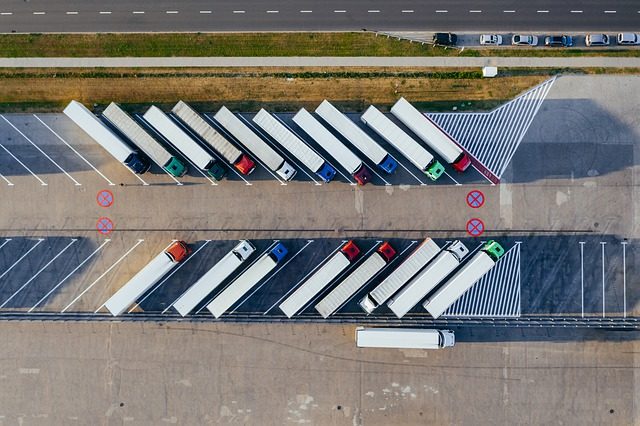
The Philippine Bureau of Customs (BOC) has issued rules on the admission, movement, and withdrawal of goods in free zones under the Customs Modernization and Tariff Act (CMTA).
Customs Administrative Order (CAO) 11-2019, signed by Finance Secretary Carlos Dominguez III on August 8 and Customs commissioner Rey Leonardo Guerrero on July 23, takes effect 30 days from August 30.
In his book “Understanding International Trade, Tariff and Customs”, former BOC deputy commissioner Atty. Agaton Teodoro Uvero, who helped draft the CMTA, said the law redefines the concept of free zones to include special economic zones other than those registered with the Philippine Economic Zone Authority (PEZA).
According to CAO 11-2019, free zones now refer to special economic zones registered with PEZA; duly chartered or legislated special economic zones and freeports such as Clark Freeport Zone, Clark Special Economic Zone, Clark Green City, Poro Point Freeport Zone, John Hay Economic Zone, Subic Bay Freeport Zone, Aurora Pacific Economic Zone and Freeport Authority, Cagayan Special Economic Zone and Freeport, Zamboanga City Special Economic Zone Authority, Freeport Area of Bataan, Morong Special Economic Zone; and such other freeports as established or may be created by law.
Goods admitted into a free zone are not subject to duty and tax, unless otherwise provided by law.
Joint administrative orders (JAOs) between BOC and the free zone authorities will be issued to outline procedures for the transit, admission, withdrawal or any movement of goods to and from the free zones.
Pending issuance of JAOs, the existing clearance procedure for admission and transit of the free zone authorities and BOC apply.
BOC will establish an office to monitor and coordinate with free zone authorities, and coordinate with such authorities to establish a BOC-Free Zone interoperability system using information and communications technology.
Admission
Under CAO 11-2019, imported goods will be admitted into a free zone when the goods declaration, together with all required documents, is electronically lodged with BOC and other relevant free zone authorities upon admission.
BOC and the free zone authority will ensure their respective ICT systems can interface to allow the single lodgment of goods declaration for admission with the customs bureau and free zone authority.
Goods entering a free zone, whether directly or through a customs territory, must be covered by the necessary goods declaration for admission or transit, respectively.
Goods directly admitted into free zones by a locator have to be covered by a goods declaration for admission, together with required documents, and goods directly admitted into free zones by a port user by a goods declaration for consumption.
Transit
Goods transited through a customs territory and admitted into free zones, on the other hand, must be covered by a goods declaration for transit, to be accepted by BOC and free zone authorities as goods declaration for transit and admission, whenever appropriate.
Free zone authorities are responsible for monitoring movement of goods within the free zone where the goods are admitted. They must provide BOC with copies of reports for monitoring the location of the admitted goods.
The transfer of goods from one free zone to another free zone has to be covered by a transit permit, to be accepted by BOC and free zone authorities as goods declaration for transit and admission, whenever appropriate, under guidelines issued jointly by the customs bureau and free zone authorities.
Imported goods directly admitted into free zones then withdrawn for entry into a customs territory must be covered by a goods declaration for consumption. This declaration shall be lodged with BOC together with the copy of the previously lodged goods declaration for admission and other required documents.
Imported goods, whether in their original or advanced form, may be withdrawn from the free zone of entry to the customs territory when the goods declaration is lodged with the corresponding permit issued by the free zone authority and sufficient security is posted, as applicable, in accordance with systems and rules jointly issued and prescribed by BOC and the free zone authorities.
Goods withdrawal
Withdrawal of goods from the free zone into the customs territory, on the other hand, must be covered by the necessary goods declaration for consumption.
If the imported goods are to be withdrawn from a free zone to be introduced to the customs territory, the duty rate and exchange rate at the time of the withdrawal will apply to the goods originally admitted, whether withdrawn in its original or advanced form.
Unless otherwise prescribed by existing laws, all applicable duties, taxes, and other charges on goods introduced into the customs territory from the free zones will be paid to BOC before release from custody, subject to the prior requirement of Authority to Release Imported Goods (ATRIG) for certain goods.
In case of sale or auction of goods by a free zone enterprise or locator to a buyer from the customs territory (i.e. domestic sales), all value-added tax due, if any, on goods sold or auctioned shall be payable to BOC.
Locators and port users are subject to the post-clearance audit function of BOC, and required to keep records of all their activities, including records on imported goods withdrawn from said free zones into the customs territory, for a period of three years from the date of filing of goods declaration.
Failure to keep the records required by CAO 11-2019 shall constitute a waiver of the right to contest the result of the audit based on records kept by BOC. – Roumina Pablo








